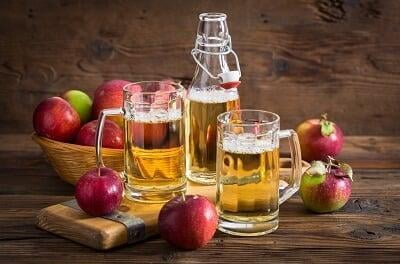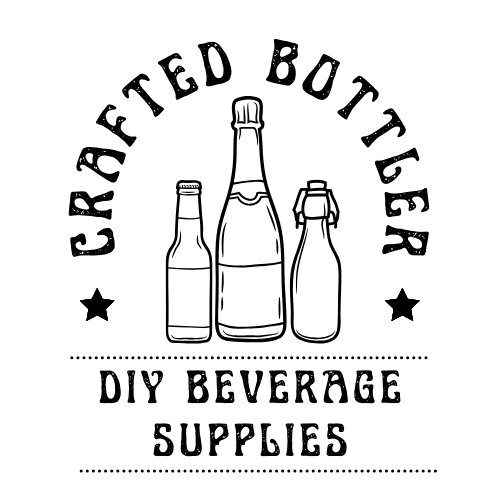How to Make Cider

Ingredients - For 5 Gallons
· 5.5 Gallons Apple Juice
· 1/4 - 1/2 teaspoon Potassium Metabisulphite
· 3 teaspoons Pectic Enzyme
· 2- 4 teaspoons Yeast Nutrient
· 1-3 teaspoons Acid Blend
· 1 packet Cider Yeast
· 1/2 teaspoon Tannin (as needed)
· 1 Tablespoon Sparkolloid
Specification
OG: 1.040 FG: 0.996 - 1.000 ABV: 5.25%
1. ACQUIRE JUICE
--Ensure that the juice does not have preservatives; sorbate, sorbitol, sulfite, things of that sort. Ascorbic acid / vitamin C is fine.
Sanitize
Thoroughly sanitize all equipment and tools that will come into contact with the ingredients.
Add Juice to Fermenter
Fill a clean and sanitized primary fermenter with 5.5 gallons apple juice. (At a minimum a 6.5-gallon capacity fermenter should be used)
2. TEST AND ADDITIONS
--OPTIONAL: If the juice is unpasteurized, add a small amount of sulfite (1/4 tsp potassium metabisulfite per 5 gallons or). Blend with a little juice to dissolve, then add to the bulk of the batch. Let stand for 24 hours.
After 24 hours:
--Add pectic enzyme at the rate of 1/2 tsp per gallon.
--Add yeast nutrient. Roughly 1/2 tsp per gallon is a good starting point. Be prepared to add more once fermentation is well under way.
--Check the gravity with a hydrometer or refractometer. Record the result. This number will help determine the alcohol by volume of the cider, as well as act as a window into the fermen tation process.
--OPTIONAL: Chaptalize (add sugar). If you’d like cider with a higher ABV, add sugar at this time. The sugar will ferment out entirely, increasing alcohol content, thinning the body, and amplifying acidity. Partially refined and darker sugars are more prone to affect the flavor. One pound of sugar in 5 gallons will add approximately one percent alcohol by volume. Belgian candi sugars, honeys, or plain corn sugar all work well and have unique effects.
-- Add acid blend. Most juice, especially juice made from later season apples, will have a lot of sweetness, but little acid. Acid helps to balance the cider by adding sharp, crisp char acter. Small amounts of acid blend can be added to taste, up to one tablespoon in five gallons. To ensure more accuracy and repeatability, use an acid test kit to determine the acid content. It’s always possible to add a little more, so err on the side of caution.
-- OPTIONAL: Add tannin. Tannin helps the cider’s “grip” and structure. These are sensations more than flavors, but can add wonderful complexity to the finished product. Start small, (1/2 tsp per 5 gallons); it doesn’t take much to get the desired effect. Remember, it’s always possible to add a little more, so err on the side of caution.
3. PITCH YEAST
-- If you added pectic enzyme and yeast nutrient wait 1 hour before pitching yeast.
--Wine yeasts, such as Lalvin K1-V1116 or or Red Star Cote des Blancs are also popular. They are best for higher alcohol apple wines that have over 10% ABV
-- Many people also use Beer yeasts to impart specific characters and “spice”
--Experiment and determine what you like most.
4. FERMENTATION
--Allow the cider to ferment to dryness.
--If the fermentation seems sluggish, smells like rotten eggs or burning matches; add yeast nutrient, 1/4 tsp at a time. Use caution when adding nutrient, as the trapped CO2 in the cider can react with the nutrient, causing an overflow of liquid.
--When the gravity is reliably stable, usually around 0.996-1.000, the cider is almost ready to be racked. Allow it to sit on the yeast sediment for a little longer - up to three weeks, to help clean up any off-flavors that were produced during fermentation.
5. CONDITIONING / SECONDARY FERMENTATION
--Rack the cider into a sanitized carboy or similar vessel that will accommodate the volume with no or minimal head space. At this point, the process is largely dependent upon taste. As the cider ages, the flavors will mellow and come into condition, the yeast and other sediment will slowly settle out, and everything will generally improve.
6. FINING
--If the cider is still cloudy and you prefer it to be clear, use Sparkolloid, to help it clarify. Follow the directions provided on the package.
7. BOTTLING
-- This recipe is for Still Cider. Add 1/4 Potassium Metabisuphite to the 5 gallons. Bottle in beer or wine bottles.
--- Carbonated Cider without a keg systems will require priming sugar and a careful eye to ensure bottles don’t over carbonate and explode.

